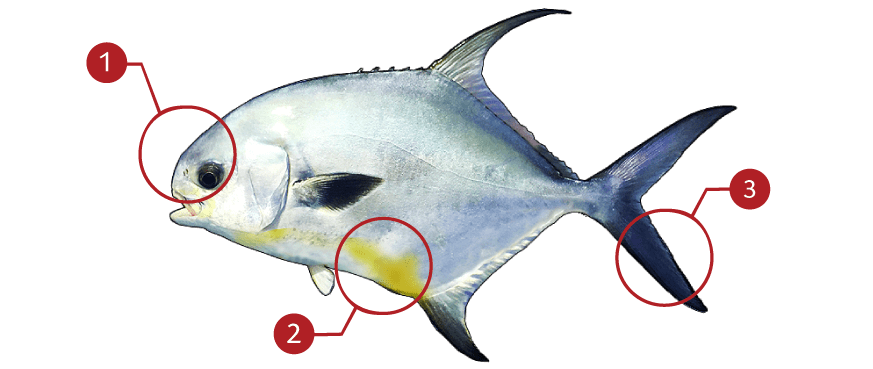PERMIT FISH
How to identify a Permit
It is distinguished from the common pompano by having fewer soft rays in the dorsal and anal fins. The second dorsal fin has 1 spine and 17-21 soft rays (22-27 in the pompano). The body is laterally compressed and the second and third ribs are prominent -- often as big around as ones thumb in fish weighing over 10 lb. (4-5 kg). These larger ribs can be felt through the sides of the fish and help in distinguishing the permit from the pompano. In overall appearance it is a silvery fish with dusky fins, though the back is usually bluish or grayish. The ventral fins and the anterior margin of the anal fin may be orange in some specimens. Often there is a triangular yellow patch before the anal fin.
Where to catch Permit
The permit can be found in the western Atlantic Ocean from Massachusetts, U.S.A. to Brazil, including the Gulf of Mexico and the West Indies. The greatest concentrations are off south Florida and it is there that the biggest specimens are taken.
IDENTIFICATION

| |
The forehead sharply rises to a hump then slopes back, unlike the Pompano which slopes gently backward from the nose |
| |
Permit fish may show orange or golden tints around the breast and anal fin |
| |
Tail fin is sloped back and narrow forked |
TARGET AREAS
|
|
Acknowledgements: We thank TAKEMEFISHING.org (www.takemefishing.org), Wisconsin Department of Natural Resources, Indiana Department of Natural Resources for their contributions to these FISH FACTS.

